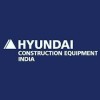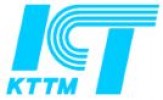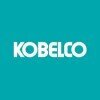
i
Sagar
Asia
Filter interviews by
Sagar Asia Design Engineer Interview Questions and Answers
Sagar Asia Design Engineer Interview Experiences
1 interview found
Interview Questionnaire
1 Question
- Q1. Tool test and return test
Interview Preparation Tips
Top trending discussions






Interview questions from similar companies

Senior Engineer Interview Questions & Answers
HYT Engineering Company Pvt Ltdposted on 11 Oct 2020
I applied via Recruitment Consultant and was interviewed before Oct 2019. There were 5 interview rounds.
Interview Questionnaire
4 Questions
- Q1. What is meaning of civil engineering.?
- Q2. How you given organization profits in your allocated job role.?
- Ans.
I have driven profits through process improvements, cost reductions, and innovative solutions in my engineering roles.
Implemented a new automated testing framework that reduced testing time by 30%, allowing faster product releases and increased revenue.
Led a cross-functional team to redesign a key product feature, resulting in a 15% increase in customer satisfaction and a 10% boost in sales.
Optimized supply chain proce...
- Q3. What are the main quality focus on civil engineering field?
- Ans.
The main quality focus in civil engineering is safety, durability, and sustainability.
Ensuring the safety of structures and infrastructure
Designing for durability and longevity
Incorporating sustainable practices and materials
Adhering to building codes and regulations
Conducting thorough inspections and testing
Using advanced technology and software for design and analysis
Collaborating with other professionals to ensure q...
- Q4. How you doing project efficient?
- Ans.
I ensure project efficiency through clear communication, agile methodologies, and continuous improvement practices.
Implement agile methodologies to adapt quickly to changes, such as using Scrum for iterative development.
Foster open communication among team members to address issues promptly, like daily stand-up meetings.
Utilize project management tools (e.g., Jira, Trello) to track progress and identify bottlenecks.
Con...
Interview Preparation Tips

Senior Engineer Interview Questions & Answers
Hyundai Construction Equipmentposted on 9 Sep 2021
I applied via Referral and was interviewed in Mar 2021. There were 3 interview rounds.
Interview Questionnaire
2 Questions
- Q1. About Process related to Assembly line
- Q2. Details of assembly line sequence
- Ans.
The assembly line sequence involves a step-by-step process of assembling parts to create a final product.
The process starts with the arrival of raw materials
Parts are then assembled in a specific order
Quality checks are performed at various stages
The final product is packaged and shipped
Efficiency and safety are key considerations throughout the process
Interview Preparation Tips

I applied via Approached by Company and was interviewed in May 2023. There were 2 interview rounds.

(2 Questions)
- Q1. 1) Hydraulics details
- Q2. GD&T explain, the difference between different GD&T
- Ans.
Geometric Dimensioning and Tolerancing (GD&T) is a system for defining and communicating engineering tolerances.
GD&T is a system used to define and communicate engineering tolerances for manufacturing processes.
Different GD&T symbols include position, concentricity, profile, perpendicularity, and parallelism.
Each GD&T symbol has a specific meaning and is used to control different aspects of a part's geometry.
For exampl...
Interview Preparation Tips
- Hydraulics
- gd&t
Skills evaluated in this interview

Design Engineer Interview Questions & Answers
Tecosim Engineering Servicesposted on 16 Feb 2022
I applied via Indeed and was interviewed in Aug 2021. There were 5 interview rounds.

(6 Questions)
- Q1. What are your salary expectations?
- Q2. What is your family background?
- Q3. Share details of your previous job.
- Q4. Why are you looking for a change?
- Q5. What are your strengths and weaknesses?
- Q6. Tell me about yourself.
(1 Question)
- Q1. About previous job work. Biw fixtures design.
(7 Questions)
- Q1. What are your salary expectations?
- Q2. What is your family background?
- Q3. Share details of your previous job.
- Q4. Why are you looking for a change?
- Q5. What are your strengths and weaknesses?
- Q6. Tell me about yourself.
- Q7. Tell me about your self your family background reason for job change. Job location preference.
Interview Preparation Tips
- BIW design engineer
Flexible work hours.

Design Engineer Interview Questions & Answers
Tecosim Engineering Servicesposted on 2 Feb 2022
I applied via Company Website and was interviewed in Jan 2022. There were 3 interview rounds.
(1 Question)
- Q1. Tool test of part drawing in software
- Ans.
Tool test of part drawing in software is a process to ensure accuracy and functionality of the software.
Tool test involves checking the software's ability to read and interpret part drawings
It ensures that the software can accurately generate tool paths based on the part drawing
Examples of software used for tool test include SolidWorks, AutoCAD, and CATIA
(1 Question)
- Q1. Technical discussion with the manager Why m joing this firm all
- Ans. The working conditions and better
(6 Questions)
- Q1. What are your salary expectations?
- Q2. Why should we hire you?
- Q3. Share details of your previous job.
- Q4. Why are you looking for a change?
- Q5. What are your strengths and weaknesses?
- Q6. Tell me about yourself.
Interview Preparation Tips
Skills evaluated in this interview

Design Engineer Interview Questions & Answers
Tecosim Engineering Servicesposted on 16 Feb 2022
I applied via Company Website and was interviewed in Jan 2022. There were 3 interview rounds.
(1 Question)
- Q1. Technical tool test on Nx or Catia
(2 Questions)
- Q1. Tell about personal and some design related technical question
- Q2. Type of clamp and locator Type of checking fixture
- Ans.
The type of clamp and locator used in a checking fixture depends on the specific application and requirements.
The clamp and locator should be chosen based on the part being checked and the desired level of accuracy.
Common types of clamps include toggle clamps, pneumatic clamps, and hydraulic clamps.
Locators can be pins, blocks, or other features that ensure proper positioning of the part.
The checking fixture may also i...
(1 Question)
- Q1. Personal interrogation
Interview Preparation Tips

Design Engineer Interview Questions & Answers
Tecosim Engineering Servicesposted on 23 Aug 2022
I applied via Approached by Company and was interviewed in Dec 2021. There were 2 interview rounds.

(2 Questions)
- Q1. GD and T aplication in fixture design
- Ans.
GD&T (Geometric Dimensioning and Tolerancing) is commonly used in fixture design to ensure accurate and precise manufacturing processes.
GD&T helps define the allowable variations in the dimensions and geometric features of a part, which is crucial in fixture design.
Fixtures are designed to hold and position workpieces during manufacturing processes, and GD&T ensures that the fixtures are capable of achieving the requir...
- Q2. 321 principle for fixture design
- Ans.
The 321 principle is a guideline for fixture design that ensures proper alignment and stability.
The 3 points refer to the minimum number of contact points required for stability.
The 2 points refer to the minimum number of planes required for alignment.
The 1 point refers to the minimum number of degrees of freedom allowed for the part being fixed.
For example, a fixture for holding a cylindrical object may have three con...
Interview Preparation Tips
Skills evaluated in this interview

(5 Questions)
- Q1. What means the General tolerances
- Q2. What is the material for wheel, Pin
- Ans.
The material for wheel is typically rubber or plastic, while the material for pin is usually metal such as steel or aluminum.
Wheel material is commonly rubber or plastic for flexibility and durability
Pin material is usually metal like steel or aluminum for strength and stability
- Q3. What are the grades of Hardwares like Screw, nut washer
- Ans.
Hardware grades are typically classified based on material composition, strength, and corrosion resistance.
Hardware grades are often denoted by a combination of letters and numbers, such as Grade 8.8 or Grade 316.
Higher grade numbers generally indicate a higher tensile strength or corrosion resistance.
Common grades for screws include Grade 2, Grade 5, and Grade 8, with Grade 8 being the strongest.
For nuts and washers, ...
- Q4. How to calculate motor power
- Ans.
Motor power can be calculated using the formula: Power (W) = Torque (Nm) x Speed (RPM) / 9.548
Calculate the torque required for the application
Determine the speed at which the motor will operate
Use the formula Power (W) = Torque (Nm) x Speed (RPM) / 9.548 to calculate motor power
- Q5. How welds are considered
Skills evaluated in this interview

(2 Questions)
- Q1. Introduce yourself
- Q2. About experience
Interview Preparation Tips
Please don't try to join
Sagar Asia Interview FAQs
Tell us how to improve this page.
Sagar Asia Interviews By Designations
- Sagar Asia Assistant Manager Interview Questions
- Sagar Asia Technician Interview Questions
- Sagar Asia Marketing Manager Interview Questions
- Sagar Asia Production Manager Interview Questions
- Sagar Asia Quality Engineer Interview Questions
- Sagar Asia Manager Quality Assurance Interview Questions
- Sagar Asia Marketing Executive Interview Questions
- Sagar Asia Design Engineer Interview Questions
- Show more
Interview Questions for Popular Designations
Interview Questions from Similar Companies
|
Assistant Manager Sales & Marketing
10
salaries
| ₹3.5 L/yr - ₹6.8 L/yr |
|
Assistant Manager
9
salaries
| ₹4 L/yr - ₹7.5 L/yr |
|
Production Engineer
8
salaries
| ₹1.7 L/yr - ₹4.8 L/yr |
|
Area Sales Manager
8
salaries
| ₹4.5 L/yr - ₹5.1 L/yr |
|
Quality Engineer
7
salaries
| ₹2.5 L/yr - ₹3.6 L/yr |

Gilbarco Veeder Root

HYT Engineering Company Pvt Ltd

Kirloskar Toyota Textile Machinery

L&T–MHI Power Boilers
- Home >
- Interviews >
- Sagar Asia Interview Questions












